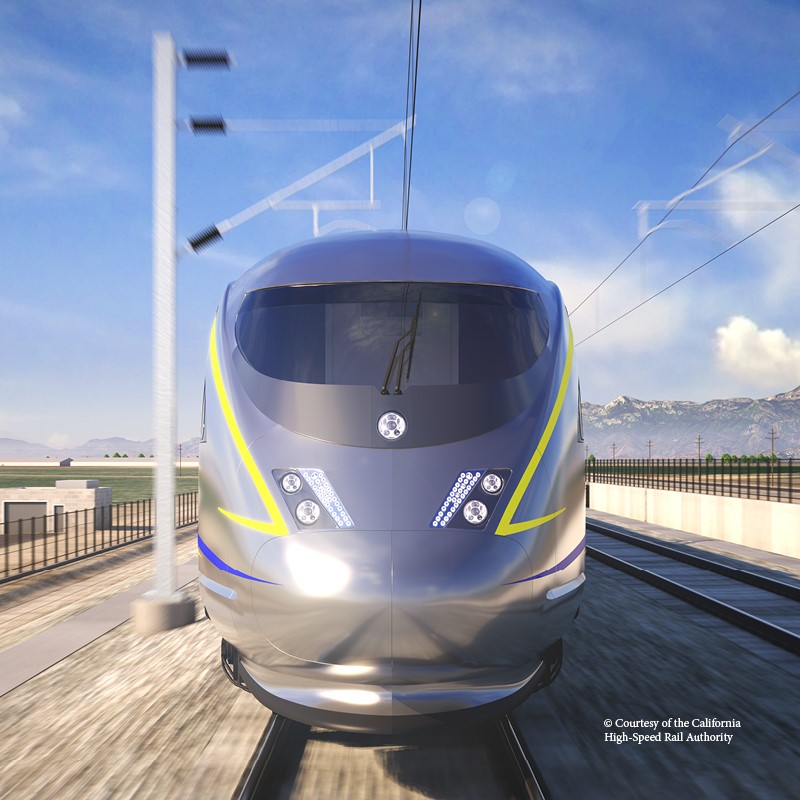Last month’s spike-driving ceremony was a feel-good story about the California bullet train. It was, said Gov. Gavin Newsom, a “big damn deal” that indicated “progress” was being made on a project that is embarrassingly behind schedule and almost inconceivably over cost. It was an event for public consumption that is far removed from reality.
For a sobering dose of that, we go to a new report from the High-Speed Rail Office of the Inspector General, which tells us “it is increasing unlikely” that the High-Speed Rail Authority will be able to finish the Madera-to-Bakersfield segment that the current plans say will be the first portion of the project to be completed.
How can this be?
Because the HSRA “has not completed a risk analysis that would allow it better to determine whether its plan for completing the M-B (the Merced-to-Bakersfield) segment is realistic and achievable.”
Curiously, this same inspector general’s office, “tasked with improving oversight and accountability” of the project through “independent, objective reviews and investigations,” has also been a cheerleader for the train. It’s posted news releases hyping its “substantial benefits to the state and underscoring the project’s role in stimulating economic growth”; celebrating its “progress”; and commending the High-Speed Rail Authority for “recognizing Earth Day by highlighting continued progress in advancing the cleanest and greenest transportation system in the country.”
It seems to be acting more like a publicist for the train than the tenacious watchdog it should be.
Assemblywoman Alexandra Macedo, a Tulare Republican elected last fall, has introduced legislation that would defund, at least temporarily, the project. She believes the resources from state cap and trade dollars could be more appropriately allocated.
“After 17 years, and $10.6 billion tax dollars spent on a route between a field in Madera and an orchard in Shafter, it is time to redirect the state’s priorities,” she said in a news release.
“That’s why I introduced Assembly Bill 267. It reprioritizes two billion dollars funding for High Speed Rail to pay for much-needed wildfire prevention and water infrastructure projects.”
It shouldn’t be hard to determine where that $2 billion would be put to its best use. California needs more water to overcome its perpetual man-made droughts, and it needs to get a better handle on the wildfires that continue to kill and destroy.
It does not need a high-speed rail.
Especially one that is going to cost more than three times its initial projections – with nearly $11 billion already sunk – is a couple of decades behind schedule, and will be far smaller in scope than the glorious intercity train its supporters promised in 2008 when voters approved a bond measure to fund it.
The day after Macedo’s news release was issued, President Donald Trump called “the train that’s being built between Los Angeles and San Francisco” “the worst managed project I think I’ve ever seen, and I’ve seen some of the worst.” He said it is one “of the things I want to investigate rapidly because I’ve never seen anything to this extent.”
If the administration follows up with Trump’s threat, will it find that anything has improved since then-State Auditor Elaine Howle gave it a poor review in 2018? There’s a slim chance, but it doesn’t seem likely. The high-speed rail has been a train bound for nowhere for so long that it’s almost impossible to imagine it will ever get on track.
Kerry Jackson is the William Clement Fellow in California Reform at the Pacific Research Institute.
(Image credit: California High-Speed Rail Authority)

